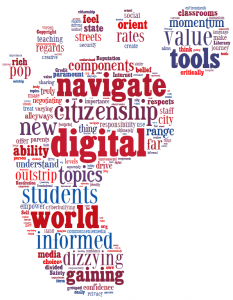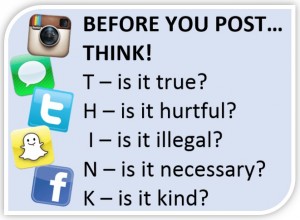Digital citizenship is a topic that is gaining a dizzying momentum. The range of tools and environments continue to pop up at rates that far outstrip our ability to understand the new territory, much less navigate it.
It is one thing to be able to orient yourself through a new environment like a holiday drive in a new city and to truly feel you can navigate the streets and alleyways with confidence. It is another to state the same with regards to the media rich world we find ourselves negotiating. Our students, staff and parents show up in our classrooms with varying levels of experience and opportunity to negotiate this digital world. It is a whole new world in many respects. The importance of teaching/sharing digital citizenship just like we offer insights into citizenship and social responsibility is paramount.
 Digital citizenship is a belief and value system that aims to empower students to think critically and make informed choices about how we use the new tools to create, communicate and ultimately treat each other.
Digital citizenship is a belief and value system that aims to empower students to think critically and make informed choices about how we use the new tools to create, communicate and ultimately treat each other.
The digital citizenship journey can be divided into eight components: Internet Safety, Cyberbullying, Privacy and Security, Digital Footprint and Reputation, Relationships and Communication, Self-Image and Identity, Information Literacy, Creative Credit and Copyright (commonsensemedia.org). Each component can stand separately or be easily grouped. The topics are interconnected and woven together to form a foundational core value. In the language of Restitution, it would be “who is the person we want to be”.
 We all (teachers, students, parents, wider community) have a stake in helping align our practices and experiences to support our students in this new world.
We all (teachers, students, parents, wider community) have a stake in helping align our practices and experiences to support our students in this new world.
Our journey started four years ago with our district blogs based on WordPress MU. I adapted this graphic to add to our collective resources on “digital wisdom”. Will be adding more as time goes by.
Wondering how you are negotiating this area with your students or districts?